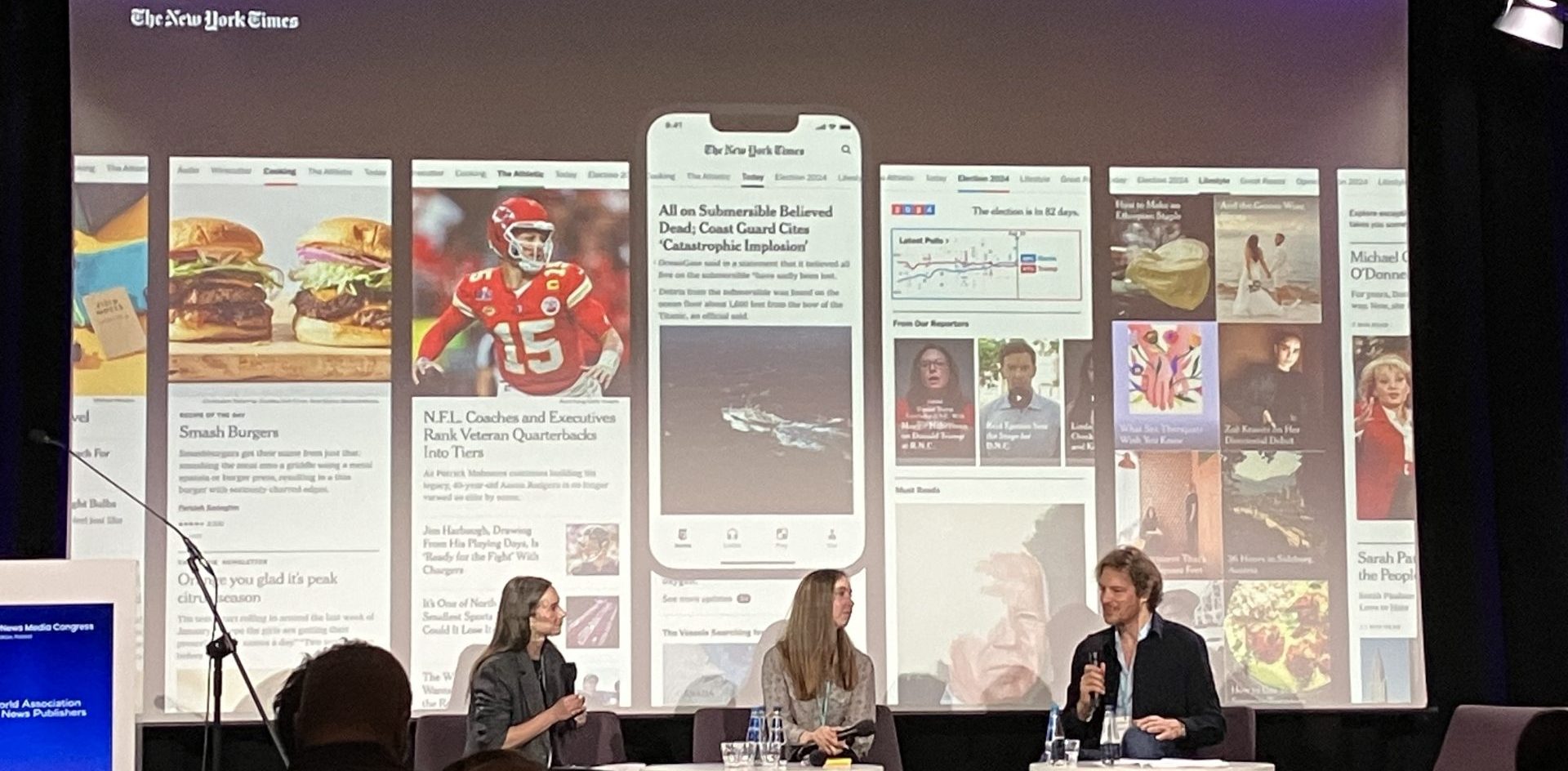
Newsletter
Newsletter
We review how publishers can employ multiple gating strategies to capture more value from all of their customer segments.
23rd February 2023

In the Pugpig weekly media bulletin, Pugpig’s consulting services director Kevin Anderson and digital growth consultant James Kember distills some of the best strategies and tactics that are driving growth in audiences, revenue and innovation at media businesses around the world.
Print is being squeezed on one end by declining circulation on one end and costs on the other end. That is one of the reasons that publishers, like Time and Cosmo UK, are not only leaning into digital but also re-imagining their brands and diversifying their revenue streams.
Sign up to get the Media Bulletin in your inbox.
There are two cases in point where magazine editors are rethinking and remaking their brands. Both Time’s Jessica Sibley and Cosmopolitan UK’s Claire Hodgson are both on missions to maintain the relevance of their brands. Sibley asked people what Time meant to them from media mogul Jeffrey Katzenberg to her own children as she sought to update the brand. At Cosmo UK, Hodgson reflected on the “core DNA” of the brand such as exploration of sex and love but for a modern audience with more fluid concepts of what that means.
For both leaders, having a strong sense of brand identity has provided them with what Hodgson described to the Press Gazette was a “”really strong foundation” for experimentation. It is an important shift as magazine editors that while print might still be important, they do not feel constrained to focus on print as they re-imagine their brand experience.
After reviewing the data, Poool suggests shifting from a focus on pageviews alone to a focus on ARPU, the average revenue per user, will allow publishers to “fully understand the value of every individual user on your site, at each step of the funnel”.
Underpinning this call to shift publishing KPIs is a data model based on loyalty. They have segmented the audience into Volatiles, Occasionals, Regulars and Fans. Volatiles are single visit users, and each segment has a higher level of engagement with Fans on average having 19.2 sessions per month. Based on this data, Poool says that Fans are worth 45 times more than Volatiles, simply based on the amount of revenue a publisher can earn from advertising.
But they take their analysis one step further by adding ARPU to the analysis, which factors in revenue from membership or subscriptions. It shows that paying members are worth 2.5 times more even a Fan who does not pay, and depending on the subscription level, a subscriber can deliver 20 times more revenue than a member and 300 times more than an anonymous user.
However, Poool suggests that rather than simply focusing on those paying subscribers that publishers should seek to maximise revenue from each of these segments. To do this, they recommend a mix of strategies to increase engagement and different gating strategies. For the more engaged segments, these gating strategies can include a registration wall for less engaged Occasional or Regular users to a hard paywall strategy for the highly engaged Fans. However, for the loosely connected Volatile users, they suggest a “cookie wall”. This gives users the option to either accept cookies or choose another cookie-free option such as becoming a subscriber.
It shows that not only are paywalls getting more dynamic but that subscription and membership providers are developing support for hybrid paid content solutions that operate across the full range of your audience.
In the first phase of development for digital media, ads were the default revenue source, says former Digiday editor Brian Morrissey. But most publishers have now added subscriptions or memberships to their revenue mix, and echoing a theme that we have been exploring here, subscription strategies are becoming increasingly diverse and dynamic. All you have to do is look at the options that Poool is recommending to its customers to see an example of this trend.
However, technology and pricing are not the only elements of increasing sophistication and experimentation when it comes to paid content strategies. He points to bundling, an idea that we have touched on here in the Media Bulletin. Most of the examples that we’ve looked at up to this point have been about individual publishers bundling content like the New York Times. But Brian looks at another approach, bundling publications. In his podcast, Brian speaks with “Axel Bard Bringéus, co-founder of Informed, a Berlin-based company with $5.3 million in backing“. Informed will offer one-stop access for paywalled content from publishers like The Economist, Bloomberg and The Financial Times to “(p)eople in non-English countries”. Those audiences might sample English-language news but it’s not their primary source of information.
Brian thinks this move is both smart and inevitable. It’s smart because it is unlikely that publishers will convert these loosely attached international audiences to paid subscribers, and the audience isn’t that attractive to advertisers because most of them are not focused on global markets. From a business standpoint, he thinks that move is inevitable because “we’ll … see new efforts to bundle content in ways that do not risk publishers’ core subscription businesses”.
Such a product is also attractive to consumers, who are looking to aggregate their subscriptions, according to research by FT Strategies and Minna Technologies. Their research found that 75% of consumers were looking for a single app to manage their subscriptions, and this desire is particularly strong amongst Millennial and Gen Z consumers.
Pugpig’s Consulting Services team is helping our publishing partners segment their audiences and develop other strategies to help them achieve their audience and revenue growth goals. If you would like to discuss how we can help you, contact us at info@pugpig.com.
Here are some of the most important headlines about the business of news and publishing as well as strategies and tactics in product management, analytics and audience engagement.

Newsletter

Newsletter

Newsletter

Newsletter

Newsletter